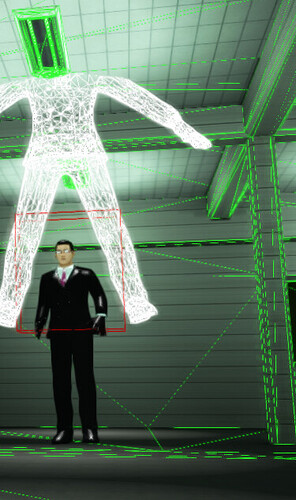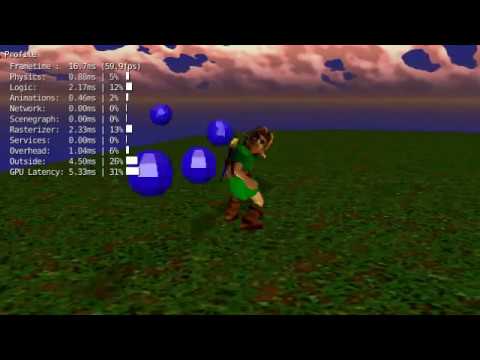help plz
you need to check the scale of the armature and your grid - perhaps the scale is larger or smaller, I know that the physics of the grid will not be consistent with the animations of the actors because the physics of the mesh is not updated automatically with deformations and updating the code is too expensive - also check the collision box, which serves as a model of collisions of the actor - for the scale
so basically the collision shape doesn’t move along with the armature. Sad but not too important
unfortunately, such calculations on older versions of OpenGL are very expensive to update them every frame - I can only suggest that you create a low poly model on top of your model and try to update its physics with delays of 5-10 logical ticks, only the grid of the collision model should be within 1500-2000 thousand polygons, then perhaps you will get a dynamic collision grid - but this It may be applicable to a limited number of actors in the frame
I would advise you to abandon the idea of using a physical mesh deformable through an armature.
Usually in games the physical mesh for the characters is very very approximate and non-deformable (sphere, capsule…).
It can be replaced with different prefabricated shapes based on the poses to have greater congruence (physical - visual) in certain situations.
Example:
If the character, whose physical mesh is a capsule, goes down, then the capsule is replaced by a sphere…
For slightly more sophisticated systems, rigid bodies connected to bones can be used to as collision boxes.
Or even there are systems to obtain active ragdolls, in which the rigid bodies (for bone) will follow the bones of the armature.
I’ve played with this in the past and using procedurally generated animations which complicated things even further… anyway It is not easy to get good results quickly
i needed it coz i wanted to get the normals during impact . But gonna use some dummy mesh instead yeah.

